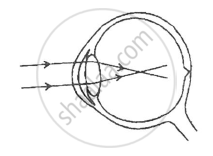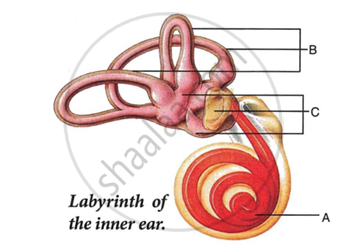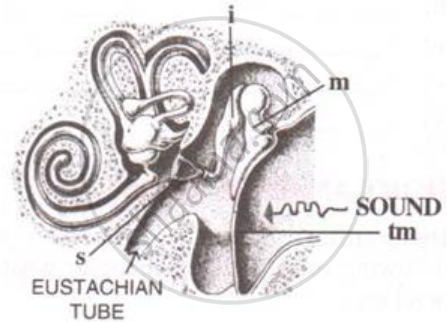Advertisements
Advertisements
प्रश्न
The three parts of human ear contributing in hearing are-
पर्याय
Cochlea, ear ossicles and tympanum
Semi-circular canals, utriculus and sacculus
Eustachian tube, tympanum and utriculus
Perilymph, ear ossicles and semi-circular canals
उत्तर
Cochlea, ear ossicles and tympanum
Explanation:
The tympanum, ear ossicles, and cochlea form a chain that captures sound waves, amplifies them, and converts them into electrical signals that the brain can understand, making them essential components in the process of hearing.
APPEARS IN
संबंधित प्रश्न
Draw labelled diagrams of the following: Ear
Photoreceptor cells are present in __________.
(A) blind spot
(B) retina
(C) cochlea
(D) cornea
Given below is a diagram depicting a defect of the human eye, study the same and then answer the questions that follow:

(i) Name the defect shown in the diagram.
(ii) What are the two possible that cause this defect?
(iii) Name the type of lens used to correct this defect.
(iv) With the help of a diagram show how the defect shown above is rectified using a suitable lens.
The exact location of the Yellow spot
Give scientific reasons: We cannot distinguish colours in moonlight.
Name the following:
The ear ossicle attached to the tympanum.
Given below is the diagram of a part of the human ear. Study the same and answer the questions that follow:
 |
Give the collective biological term for Malleus, locus and Stapes.
Draw a labelled diagram of the inner ear.
How could you convince a small child that when you speak, it is not necessary for air to travel from you mouth to the ear of listener?
There are three small bones in the muddle ear – anvil, hammer and stirrup :
(a) Which of these bones is in touch with ear-drum ?
(b) Which of these bones is in touch with oval window ?
Give the main function of the following:
Cochlea
Choose the correct answer.
Labyrinth is a part of ____________
The figure below is the sectional view of a part of the skull showing a sense organ:

What are the parts labeled 'm', 'i' and 's'? What do these parts constitute collectively?
Differentiate between:
The middle ear and Inner ear.
Name the three ossicles of the middle ear.
The range of audible frequency for the human ear is
Select the CORRECT match of part of the human ear and its function.
Note the relationship between the first two words and suggest the suitable word/words for the fourth place.
Ear pinna : Auricle :: Inner ear : ______.
Give reason:
Three small bones of ear ossicles are advantageous as compared to one single bone for hearing.
- Draw a neat and well labelled diagram of the membranous labyrinth found in the inner ear.
- Based on the diagram drawn above in (i), give a suitable term for each of the following descriptions:
- The structure responsible for hearing.
- The sensory cells that help in hearing.
- The membrane-covered opening that connects the middle ear to inner ear.
- The nerves that carry impulses from the ear to the brain.
- The tube which equalises the air pressure on either side of the ear drum.
